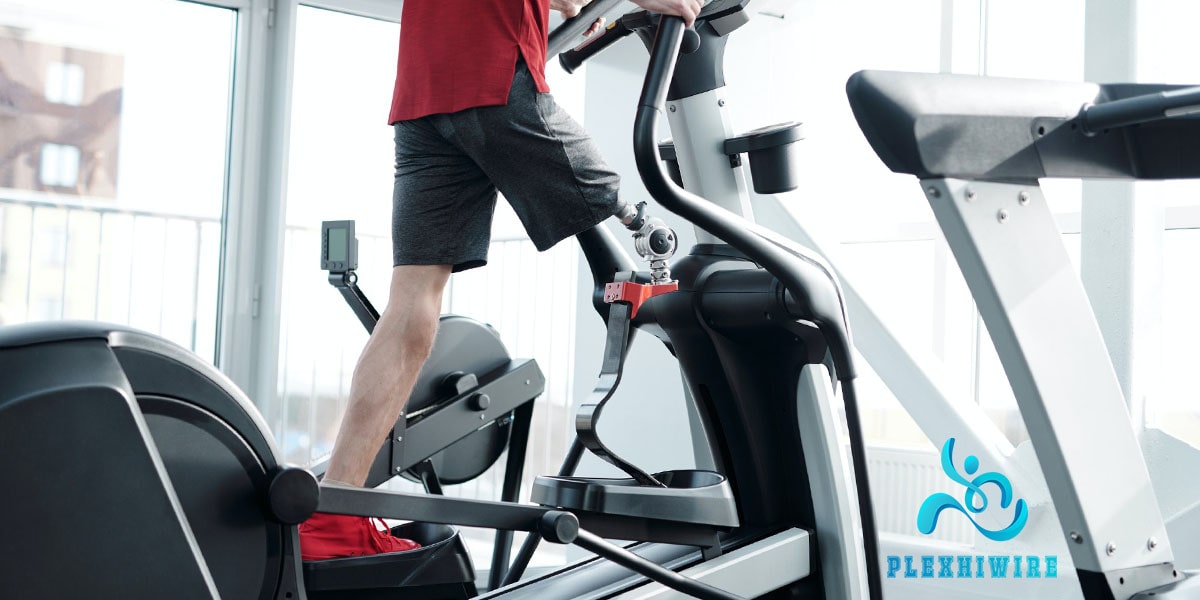Should I Turn a Bike Into a Stationary Bike?
Do you find yourself going to the gym more often than the outdoor bike trails? If so, are you looking for ways to save time and money while still getting a great workout in? Well, why not use your own two-wheeled friend instead of relying on a stationary bike or other fitness equipment at the gym? Believe it or not, with some creativity and ingenuity (and maybe an extra part or two), you can create your very own stationary bicycle from your regular riding bike! Read this “Should I Turn a Bike Into a Stationary Bike?” article and learn how to turn a regular bicycle into a stationary one – perfect for those who want an easier transition between cycling through town and spinning indoors.
Whether you’re an avid cyclist who wants some extra exercise during the winter months or someone without access to a regular gym, turning your regular bicycle into a stationary bike is a great way to get in some low-impact cardio exercise right from the comfort of your home. By converting your everyday two-wheeler into an indoor spinning machine, you can experience all the benefits of cycling without having to brave through any bad weather conditions.
- Should I Turn a Bike Into a Stationary Bike?
- Should I Turn a Bike Into a Stationary Bike?
- What Equipment is Needed to Turn a Bike Into a Stationary Bike?
- How to Turn a Bike Into a Stationary Bike
- How Do You Make Sure Your Setup is Stable and Secure?
- What Safety Precautions Should be Taken When Using a Stationary Bike?
- What Maintenance Should I Do to Keep My Stationary Bike in Good Shape?
- How Long Does It Take to Turn a Bike Into a Stationary Bike?
- Can I Still Use My Bike Outdoors Once It’s Been Converted Into a Stationary Bike?
- How Much Money Will I Save by Doing This Myself?
- How Do I Customize My Stationary Bike to Make It More Comfortable?
- Frequently Asked Questions
- Conclusion
Should I Turn a Bike Into a Stationary Bike?
If you are someone who loves cycling and often indulges in long rides outdoors, it may be worth considering switching to a stationary bike for a while. A stationary bike provides a low-impact cardiovascular workout that can help you strengthen your leg muscles and improve your overall fitness. Moreover, it eliminates the risks associated with cycling on busy roads, such as accidents, injuries, pollution, and bad weather conditions.
One of the main reasons why people prefer stationary bikes is the convenience of being able to exercise at home. With a stationary bike, you don’t have to worry about riding to a fitness gym or braving the elements outside. Additionally, a stationary bike allows you to customize your workout by adjusting the resistance levels, incline, and speed according to your fitness level and goals. This makes the workout more interesting and challenging, as well as helps you track your progress.
Another advantage of using a stationary bike is that it provides a safe and low-impact workout that can be beneficial for people with joint problems or back pain. When you ride a regular bike on uneven surfaces, you may jar your joints and back, which can lead to injuries over time. However, with a stationary bike, you get a smooth and consistent workout that reduces the pressure on your joints and back.
Finally, a stationary bike is a great way to maintain your fitness level during the off-season or when you are too busy to cycle outdoors. By incorporating a stationary bike into your fitness routine, you can stay fit and active all year round, regardless of the weather and your schedule.
In summary, switching from a regular bike to a stationary bike offers numerous benefits, including convenience, customization, safety, low-impact workout, and year-round fitness. Whether you are a cycling enthusiast or someone who needs to improve your fitness level, a stationary bike can be a great investment in your health and well-being.
What Equipment is Needed to Turn a Bike Into a Stationary Bike?
The process of turning a regular bike into a stationary bike requires some essential equipment for fitness enthusiasts. Firstly, a trainer stand is necessary to lift the rear wheel off the ground. This stand supports the bike by the rear axle and provides stability throughout a workout. Secondly, a riser block needs to be placed under the front wheel to level the bike and create a slight incline. This incline helps to simulate the feeling of riding on the road.
Additionally, a bike computer can be attached to the bike to monitor metrics such as speed, cadence, and distance. These devices provide valuable feedback for those who want to track their progress and improve their fitness goals. Moreover, a heart rate monitor can be used to track the intensity of the workout and ensure that the level of effort is appropriate for reaching fitness goals.
Another critical piece of equipment is a sweat guard to protect the bike from the corrosive effects of sweat. The guard is a flat mat that protects the bike frame and catches droplets of sweat that might cause damage to the bike’s metal parts. Lastly, a good quality fan is recommended to keep the rider cool and comfortable during a workout, especially in hot environments.
To sum up, turning a regular bike into a stationary bike requires a trainer stand, a riser block, a bike computer, a heart rate monitor, a sweat guard, and a fan. These equipment items help to make the workout experience comfortable, safe, and effective, bringing the benefits of outdoor cycling into the comfort of your home.
See more: How to Measure Inseam for Bike Indoor
How to Turn a Bike Into a Stationary Bike
Turning a regular bike into a stationary bike is a convenient and cost-effective way to stay physically active while staying indoors. With just a few simple adjustments, you can transform your bicycle into a stationary workout machine that will provide an intense cardiovascular workout and help you achieve your fitness goals. Here is a detailed step-by-step guide on how to turn your bike into a stationary bike.
Preparation
Before you turn your bike into a stationary bike, make sure you have all the necessary tools, such as a bike trainer, front wheel stand, floor mat, and bike computer. These tools will help you create a stable and secure platform for your bike and track your progress during your workout.
Set up the Bike Trainer
The bike trainer is the most crucial component of a stationary bike setup. It is a device that mounts to the bike’s rear wheel and provides resistance to simulate outdoor riding conditions. To set up the bike trainer, first, remove the bike’s rear wheel and attach the trainer’s mounting mechanism to the bike frame. Next, secure the bike onto the trainer by aligning the rear axle with the trainer’s spindle and tightening the quick-release lever.
Install the Front Wheel Stand
The front wheel stand is an essential part of a stationary bike setup that helps to keep the bike level and stable during your workout. To install the front wheel stand, simply attach it to the ground in front of the trainer, rest the bike’s front wheel on it, and adjust the stand’s height to match the bike’s front wheel height.
Add a Floor Mat
To protect your floor and reduce noise from the bike trainer’s vibrations, place a floor mat under the trainer and the front wheel stand. A mat made from a thick and durable material, such as rubber or foam, is a great option.
Install a Bike Computer
Finally, add a bike computer to track your speed, distance, and other workout metrics during your stationary bike workout. Bike computers can be attached to the front wheel’s hub or the trainer’s spindle to display real-time data during your workout.
In summary, with a little bit of time and effort, you can easily turn your regular bike into a stationary bike that will allow you to enjoy a challenging and effective indoor workout. The steps outlined above will guide you through the process of setting up your stationary bike safely and comfortably. So, grab your bike, follow these steps, and start pedaling!
How Do You Make Sure Your Setup is Stable and Secure?
Ensuring a stable and secure setup for a bike to a stationary bike requires attention to detail and careful consideration. There are several important steps that must be taken to guarantee a safe and effective workout.
Firstly, it is crucial to select the right type of stationary bike for your bike. This will depend on the size and style of your bike, as well as your personal preferences. Some stationary bikes require a specific type of bike frame to be compatible, while others are more universal.
Once you have selected the appropriate stationary bike, it is vital to ensure that it is properly leveled. A stationary bike that is not level can lead to discomfort, muscle strain, and even injury. To achieve a level setup, place a spirit level on the floor below the front of the stationary bike and adjust the feet until it is perfectly level.
Next, attach your bike to the stationary bike using a bike trainer. This device clamps onto the rear axle of your bike and provides resistance to simulate riding on the road. Make sure that the bike trainer is securely in place and that your bike is securely attached to the trainer.
Finally, adjust the height and position of the seat and handlebars to suit your body size and riding preferences. An incorrect position can lead to discomfort, injury, and poor performance. The seat should be at the same level as your hip bone, and the handlebars should be at a comfortable distance from the seat.
By following these steps, you can create a stable and secure setup for your bike to a stationary bike, ensuring a safe and effective workout.
What Safety Precautions Should be Taken When Using a Stationary Bike?
When it comes to using a stationary bike, it is important to prioritize your safety so that you can enjoy a safe and effective workout. To reduce the risk of injury or harm, there are several safety precautions that you should follow:
Proper Bike Fit: Before you begin cycling, ensure that the bike is properly adjusted to your body so that you can maintain the correct posture throughout the workout. This means adjusting the seat height and handlebars to match your height and reach.
Warm-Up and Cool Down: It is crucial to take the time to warm up your body with some light stretching or a slow-paced ride. Similarly, you should also cool down at the end of your workout to ensure that your body returns to its resting state gradually.
Keep Hydrated: Staying hydrated is essential to perform at your best and avoid any health complications. Drink water before, during, and after your workout to stay hydrated and maintain your energy levels.
Wear Appropriate Clothing: Wear comfortable, breathable clothing that allows you to move freely. Avoid loose clothing that can get caught in the bike’s moving parts.
Use Correct Resistance: Make sure to adjust the resistance level according to your skill level and fitness goals. Start with low resistance if you are new to stationary biking and gradually increase it as you get more comfortable.
Monitor Heart Rate: Use a heart rate monitor to keep an eye on your heart rate and make sure that you do not exceed the desired target zone. This helps to avoid potential heart-related complications.
By following these safety precautions, you can ensure a safe and effective workout on a stationary bike, and enjoy the benefits of this low-impact, high-intensity exercise without any unnecessary risks.
What Maintenance Should I Do to Keep My Stationary Bike in Good Shape?
If you own a stationary bike at home, it is important to keep it well-maintained to ensure its longevity and efficient performance. Regular maintenance of your stationary bike can also prevent costly repairs and ensure a safe and comfortable workout experience.
The first and most critical step in bike maintenance is to keep it clean. You can do this by wiping down the bike after each use to remove sweat and dirt. Be sure to focus on the areas with moving parts, including the pedals, flywheel, and chain. To get rid of dirt and debris, use a damp cloth and a cleaning solution designed for fitness equipment. Avoid harsh chemicals that could damage the bike’s finish.
Another crucial aspect of stationary bike maintenance is checking the bike’s parts. Begin by inspecting the pedals, crank arms, and seat for any signs of wear and tear. If you notice any loose or broken parts, tighten or replace them immediately. You should also check the tension on the bike’s belt or chain, making sure it is neither too tight nor too loose. If you hear any strange noises while pedaling, it could be a sign that the bike needs lubrication.
Lastly, ensure that you keep the bike in a cool, dry place when not in use. Humidity and moisture can cause rust and corrosion to the bike’s metal parts. Consider buying a bike cover to protect it from dust, sunlight, and other elements.
Overall, with proper care and maintenance, a stationary bike can last for many years. Follow these tips, and you will be sure to get the most out of your exercise equipment.
Read more: How to Use Indoor Cycling for Knee Pain Relief
How Long Does It Take to Turn a Bike Into a Stationary Bike?
The process of converting a regular bike into a stationary bike can vary in length depending on the complexity of the conversion method employed. Several factors influence the amount of time required to complete this transformation, including the expertise of the person undertaking the modification, the tools, and materials available, and the bike’s model and condition.
Nevertheless, if you possess the proper resources and knowledge, you can typically convert a regular bike into a stationary bike within an hour or two. One popular conversion method involves the attachment of a trainer, which clamps onto the back wheel’s frame and provides resistance against the back tire to simulate outdoor cycling. This technique typically takes little time to set up, with most models requiring you to adjust the rear skewer of the bike and clamp the trainer securely onto it.
Another technique involves the use of rollers, which support the bike’s wheels and allow the rider to pedal while remaining stationary. This method requires a bit more time and expertise since it involves lining up the bike’s wheels precisely with the rollers to prevent mishaps while riding. Additionally, the rider must retain their balance while riding since they have to pedal without any support beneath their bike’s frame.
Transforming a regular bike into a stationary bike can take anywhere between an hour to a few hours, depending on the conversion technique used. A percentage of the time is dedicated to gathering the required tools and materials and understanding the modifications’ intricacies before beginning the conversion process. With the proper resources and expertise, adapting your bike to stationary bike results in a marvelous way to enjoy a rigorous workout anytime, anywhere, according to your personal fitness requirements.
Can I Still Use My Bike Outdoors Once It’s Been Converted Into a Stationary Bike?
Once your bike has been successfully converted into a stationary bike, you may be eager to put it to use without leaving the comfort of your own home. However, you may also be wondering whether you can still use it as a regular bike for outdoor exercise. The short answer is yes, you can still use your bike outdoors even after it has been converted into a stationary bike. However, there are some important considerations to keep in mind.
First and foremost, it’s important to note that when you use your bike as a stationary bike, you’re essentially locking it in place. This means that you won’t be able to take it outside and ride it as you would normally do. Instead, you’ll need to unhook it from your stationary bike stand and remove any accessories you may have added in order to transform it back into a regular bike.
It’s also worth noting that there may be some differences in how your bike handles once it has been converted into a stationary bike. This is especially true if you’ve made significant modifications to the bike, such as swapping out the tires or making other changes to the frame. Before taking your bike outside for a ride after using it as a stationary bike, it’s a good idea to take it for a quick spin around your neighborhood or a nearby park to get a sense of how it feels and handles.
Finally, it’s important to remember that if you’ve been using your stationary bike for a while, you may have built up a lot of strength in your legs. This can make outdoor biking feel easier, but it’s also important to be mindful of your body and not push yourself too hard initially. Gradually work up to longer and more intense rides as your body adapts to the different demands of outdoor cycling.
In conclusion, converting your bike into a stationary bike can be a great way to get in shape and stay active without leaving your home, but it’s still possible to use your bike for outdoor exercise once you’re done with your indoor workouts. Keep in mind the differences in handling and adjust accordingly, and be mindful of your body and its limits as you get back into outdoor cycling.
How Much Money Will I Save by Doing This Myself?
If you are an avid cyclist, you might find that your love for cycling does not stop during the colder winter months. However, outdoor cycling during this time can be dangerous, impractical, or simply unenjoyable. This might lead you to consider transforming your bike into a stationary one at home, which can also be an effective way to save some money on expensive gym memberships.
Assuming you already have a bike to work with, the cost of converting it into a stationary bike can be relatively inexpensive, especially if you are willing to do it yourself. You will need a few supplies, such as a trainer or rollers, which can be found for as low as $50. Some higher-end options can cost up to hundreds of dollars, but those are typically unnecessary for basic stationary cycling.
Aside from the initial cost of supplies and equipment, maintaining a stationary bike is also relatively cheap. You won’t need to worry about regular tire replacements or other outdoor cycling expenses like chain lubrication, brake adjustments, and other general repairs, all of which can add up to a considerable amount of money over time. Instead, you will only need to clean your bike after each use, keeping it in good working order.
As for the savings compared to gym memberships, the numbers can vary significantly depending on where you live, but generally speaking, a gym membership can cost you up to $50 or more per month. This expense adds up quickly, making a stationary bike conversion a wise investment that can pay for itself in a few months. Plus, with a stationary bike at home, you can work out at any time you want, and you don’t have to worry about commuting to or from the gym, which saves you both time and money.
In conclusion, building a stationary bike from your existing bicycle is a cost-effective and convenient way to keep cycling year-round, as well as maintain an active lifestyle. The initial investment in equipment is relatively low, and the maintenance cost is minimal compared to outdoor cycling. Plus, compared to expensive gym memberships, building a stationary bike can save you a significant amount of money over time.
How Do I Customize My Stationary Bike to Make It More Comfortable?
There are a number of ways to customize your stationary bike to make it more comfortable and enjoyable, regardless of whether you are a seasoned rider or a newcomer to indoor cycling. In order to get the most out of your workout, it is essential to adjust the bike to suit your individual needs and preferences.
Firstly, make sure that your saddle is positioned correctly. The saddle should be level and in line with your hips, with a slight bend in your elbows. It is also a good idea to invest in a high-quality gel saddle cover (or padded bike shorts!) to help absorb shock and reduce pressure on your sit bones.
Secondly, adjust the handlebars to a comfortable height and distance from the saddle. This will ensure that you can maintain the correct riding position and avoid placing too much stress on your shoulder, neck or back muscles. Experiment with different handlebar positions to find the best fit.
Thirdly, check the resistance levels on your bike. If you are struggling with resistance, adjust the bike to a lower setting or invest in resistance bands which can help you get a full-body workout. And if you find the resistance too easy, crank it up to increase the challenge.
Finally, don’t forget about the little things that can make a big difference in your ride. Consider investing in noise-canceling headphones to immerse yourself fully in your workout, or placing a fan nearby to help keep you cool and reduce sweating.
Customizing your stationary bike can make all the difference in enhancing your workout and preventing discomfort or injury. Whether it’s adjusting the seat height, changing the resistance levels, or investing in extra equipment, taking the time to personalize your riding experience can lead to a more comfortable, effective, and enjoyable workout.
Frequently Asked Questions
Can You Ride a Stationary Bike with Clips or Regular Shoes?
The answer is yes – you can ride a stationary bike with both clips and regular shoes. Clipless pedals offer a more efficient cycling motion as your feet are secured to the pedals, allowing for better power transfer throughout the pedal stroke. Regular shoes provide a less secure connection to the pedals but still allow for an effective workout. Ultimately, it comes down to personal preference and what type of shoe provides you with the greatest comfort and stability while riding. If you’re new to cycling or have never used clipless pedals before, we suggest starting off with using regular shoes until you become comfortable with the feel of being connected to your bike through the pedals. Whichever option you choose, make sure that your feet are firmly attached throughout your ride for maximum safety.
What Type of Stationary Bike Conversion Kit Should I Buy?
The type of stationary bike conversion kit that you choose should depend on your needs and preferences. There are several different types available, such as magnetic resistance, air resistance, or belt-driven units. Each type has its own advantages and disadvantages, so be sure to research all options before making a purchase. Additionally, there are kits designed for specific bike frames, so make sure to select the one that is compatible with your bicycle frame.
Is It Hard to Install a Stationary Bike Conversion Kit?
Installing a stationary bike conversion kit does require some technical knowledge and skill, so you may want to consult with an expert for assistance. That said, most basic conversion kits are relatively easy to install as they come with detailed instructions and all necessary hardware. If you do choose to tackle the installation yourself, be sure to take your time and read through the instructions carefully before beginning.
Conclusion
Converting a bike into a stationary bike can be an immensely beneficial experience for those looking to add more active movement to their everyday lives. Making the switch is relatively simple and hassle-free, requiring just a few quick adjustments. All that’s needed is an exercise bike stand, access to some tools, as well as making sure you have the right tools depending on what type of bike you have. Additionally, you’ll need to make sure that the size of your bike and stand are compatible with each other before making the purchase. This project can be done on a weekend and does not require excessive labor or preparation, making it ideal for those just starting out in their cycling or workout journey.
In conclusion, turning a regular bike into a stationary one doesn’t have to be complicated. As people increasingly turn to DIY projects to get creative, there’s no better time to take advantage of these straightforward methods for making cycling available even when riders are cooped up inside. Hopefully, the post “Should I Turn a Bike Into a Stationary Bike?” on this blog has been useful in providing both motivation and guidance in converting your regular bike into a stationary one!








